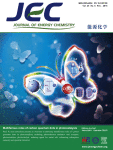
Journal of Energy Chemistry
Scope & Guideline
Exploring the Frontiers of Energy Chemistry
Introduction
Aims and Scopes
- Energy Storage Systems:
Research on various energy storage technologies, including batteries (lithium-ion, sodium-ion, zinc-ion, etc.), supercapacitors, and hybrid systems, focusing on performance enhancement, cycle stability, and safety. - Electrocatalysis and Fuel Cells:
Investigation into electrocatalytic processes and fuel cell technologies, aiming to improve efficiency and reduce costs for applications in hydrogen production, CO2 reduction, and overall energy conversion. - Photovoltaic Materials and Devices:
Development of advanced photovoltaic materials, including perovskite solar cells and organic photovoltaics, with a focus on improving efficiency, stability, and scalability of solar energy conversion. - Nanomaterials for Energy Applications:
Utilization of nanostructured materials to enhance the performance of energy-related devices, including catalysts, electrodes, and membranes, through improved surface area and reactivity. - Sustainable Energy Chemistry:
Research aimed at understanding and developing sustainable pathways for energy production and conversion, including biomass conversion, CO2 utilization, and the design of eco-friendly materials. - Interface Engineering and Device Integration:
Studies focusing on the optimization of interfaces in energy devices to enhance performance and stability, including solid-electrolyte interfaces in batteries and charge transport layers in solar cells.
Trending and Emerging
- Advanced Battery Technologies:
Research efforts are increasingly focused on developing high-performance batteries, including solid-state batteries, sodium-ion, and lithium-sulfur systems, emphasizing enhanced energy density and safety. - Electrocatalysis for Green Hydrogen Production:
There is a growing trend in electrocatalysis research aimed at improving hydrogen production from renewable sources, with a focus on optimizing catalysts for water splitting and CO2 reduction. - Perovskite and Hybrid Solar Cells:
Perovskite solar cells are at the forefront of photovoltaic research, with significant advancements in efficiency and stability, leading to increased interest in hybrid systems and scalable production methods. - Nanotechnology in Energy Conversion and Storage:
The integration of nanomaterials in energy devices is a burgeoning area of interest, focusing on improving charge transport, catalytic activity, and overall device performance through innovative nanostructures. - Sustainable Energy Materials:
Research is increasingly directed towards developing materials that are not only efficient but also sustainable, including the use of biomass-derived materials and recyclable components in energy devices. - Machine Learning and Data-Driven Approaches:
The application of machine learning techniques to optimize materials and processes in energy chemistry is emerging as a significant trend, facilitating rapid discovery and innovation in energy technologies.
Declining or Waning
- Conventional Fossil Fuel Catalysis:
Research on traditional catalysis for fossil fuel processing has waned as the journal increasingly emphasizes renewable energy sources and sustainable alternatives. - Basic Theoretical Studies:
Papers focusing solely on theoretical or computational studies without experimental validation have decreased, as there is a growing preference for applied research with practical outcomes. - Single-Use Energy Devices:
The focus on single-use energy devices, such as disposable batteries or fuel cells, has diminished in favor of developing sustainable, rechargeable systems that align with environmental goals. - Low-Efficiency Organic Solar Cells:
Research on low-efficiency organic solar cells has declined as advancements in perovskite and other high-efficiency materials take precedence in the pursuit of better photovoltaic technologies. - Low-Capacity Energy Storage Solutions:
There is a noticeable decrease in interest in low-capacity energy storage solutions, as the journal shifts towards exploring high-capacity, high-performance alternatives.
Similar Journals

Advanced Energy and Sustainability Research
Unlocking Potential in Energy and Sustainability ResearchAdvanced Energy and Sustainability Research is a leading open-access journal published by WILEY since 2020, dedicated to advancing knowledge and understanding in the realms of energy and sustainability. With an impressive impact factor and a commitment to high-quality, peer-reviewed research, this journal serves an international audience of researchers, professionals, and students passionate about addressing critical environmental challenges. The journal encompasses a wide array of topics within environmental science and energy fields, securing notable rankings in Scopus with top percentiles across several categories, including Ecology, Energy Engineering and Power Technology, and Waste Management. Given its open-access model, Advanced Energy and Sustainability Research facilitates the dissemination of cutting-edge research, enhancing accessibility and fostering collaboration within the scientific community. This journal not only plays a pivotal role in shaping public policy and industry practices but also aims to inspire innovative solutions for sustainable development in an increasingly complex world.

EnergyChem
Catalyzing Change through Open Access Energy Research.EnergyChem is a premier academic journal published by ELSEVIER, dedicated to advancing the field of energy chemistry and its applications in sustainable technologies. With a strong focus on biomaterials and innovative chemistry solutions, the journal has established itself as a leading platform within the research community, boasting remarkable rankings such as Q1 in Biomaterials, Chemistry (miscellaneous), and Energy (miscellaneous) for 2023. Notably, it ranks 2nd in both Materials Science and Energy categories, reflecting the high caliber of research it publishes, which is crucial for tackling pressing global energy challenges. Since its inception in 2019, EnergyChem has been committed to open and accessible research, making it an invaluable resource for researchers, professionals, and students striving for cutting-edge insights in energy conversion and storage. With its target audience in mind, the journal encourages submissions that explore innovative materials, processes, and applications that will contribute to a sustainable energy future.

Journal of Power Sources Advances
Advancing Knowledge for a Sustainable FutureJournal of Power Sources Advances, published by ELSEVIER, stands at the forefront of innovative research within the fields of Electrochemistry, Energy Engineering and Power Technology, and Materials Chemistry. Having established itself as an Open Access journal since 2020, it aims to disseminate knowledge rapidly and widely among researchers, professionals, and students interested in the latest advancements in power sources technology. With an impressive impact factor and recognition as a Q1 journal in 2023 across multiple categories, it addresses key challenges and innovations in energy generation, storage, and materials development. The journal's commitment to high-quality, peer-reviewed content fosters a vibrant community for discussing breakthroughs that hold the potential to transform energy systems globally. The journal operates out of the Netherlands, enhancing its global outreach, while its strong Scopus rankings highlight its influential role in driving research within its scope. Journal of Power Sources Advances is the pivotal resource for those dedicated to shaping the future of energy sustainability and technology.
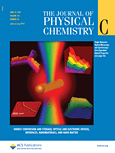
Journal of Physical Chemistry C
Unraveling the mysteries of nanoscience and beyond.The Journal of Physical Chemistry C, published by the American Chemical Society, stands as a pivotal resource in the realm of materials science and physical chemistry. With an impact factor reflecting its esteemed reputation, this journal showcases high-quality research spanning topics such as electronic, optical, and magnetic materials, as well as nanoscience and nanotechnology. Hailing from the United States, it operates without an open access model, yet its contributions are critical for advancing our understanding of surfaces, coatings, and films. Notably, the journal is classified in Quartile 1 (Q1) for several categories, underscoring its prominence in Physical and Theoretical Chemistry and related fields. Researchers, professionals, and students alike will find value in the comprehensive discussions and innovative research trends presented. The scholarly articles published from 2007 to 2024 not only drive forward scientific inquiry but also inform practical applications in various industries, making this journal an essential tool for anyone committed to excellence in the sciences.

Electrochemical Science Advances
Advancing Knowledge in ElectrochemistryElectrochemical Science Advances, published by WILEY, is an esteemed Open Access journal that has been making significant contributions to the field of electrochemistry since its inception in 2021. With an ISSN of 2698-5977, this journal serves as a vital platform for researchers and practitioners looking to disseminate their findings on a diverse range of topics within the electrochemical sciences and related areas. The journal has achieved commendable rankings in the Scopus database, placing it in the 2nd quartile in Chemistry (miscellaneous) and the 3rd quartile in Electrochemistry, highlighting its relevance and growing influence in the academic community. As it converges from 2021 to 2024, Electrochemical Science Advances aims to foster collaboration and innovation, offering a vital resource for students, professionals, and researchers dedicated to advancing knowledge and technology in electrochemistry. Access to this cutting-edge research is straightforward, allowing for a comprehensive engagement with the latest advances in the field.
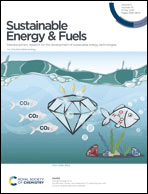
Sustainable Energy & Fuels
Bridging Knowledge and Innovation in Energy SolutionsSustainable Energy & Fuels is a leading journal published by the Royal Society of Chemistry, dedicated to advancing knowledge in the fields of energy engineering, fuel technology, and renewable energy solutions. With its ISSN of 2398-4902 and notable Q1 status in both Energy Engineering and Power Technology as well as Fuel Technology, this journal ranks impressively in the Scopus database, ensuring a strong platform for disseminating impactful research. The journal spans a comprehensive scope aimed at addressing the global challenges of sustainable energy, including innovative methodologies and technologies that promote environmental sustainability. Although it operates under a traditional access model, the journal is committed to providing high-quality content that engages researchers, professionals, and students alike. With significant contributions expected through 2024, Sustainable Energy & Fuels stands at the forefront of facilitating scholarly communication, inspiring advancements in energy technologies that align with sustainability goals.

Electrochemical Energy Reviews
Unlocking the Future of Energy InnovationElectrochemical Energy Reviews, published by SpringerNature, serves as an essential platform for the dissemination of cutting-edge research in the fields of electrochemistry, material science, and energy engineering. With an impressive impact factor and ranked in the Q1 category across multiple disciplines including Chemical Engineering and Energy Technology, this journal highlights its commitment to advancing knowledge and innovation within the energy sector. Operating since 2018, the journal not only provides a valuable resource for researchers and professionals but also invites contributions from students and emerging scholars interested in the pivotal role of electrochemical processes in sustainable energy solutions. Published in Germany and widely accessible to the global research community, Electrochemical Energy Reviews is an indispensable reference for those keen on exploring the future of energy technologies.

Energy Material Advances
Fostering Knowledge for a Greener FutureEnergy Material Advances, published by the American Association for the Advancement of Science, stands at the forefront of energy research, showcasing groundbreaking studies in the realm of renewable energy, fuel technology, and materials science. With the journal's commitment to open access since 2020, it aims to democratize knowledge and foster innovation across a global community of researchers, professionals, and students. The journal boasts an impressive impact factor, placing it firmly within the Q1 category across multiple disciplines including Energy (miscellaneous), Fuel Technology, and Renewable Energy, Sustainability and the Environment, highlighting its significance in advancing scholarly discussions. In the latest Scopus rankings, Energy Material Advances ranks among the top 10% of journals in its field, affirming its role as a pivotal resource for current and emerging trends in energy materials. The journal is dedicated to facilitating collaborative efforts and inspiring novel approaches to the challenges posed by energy sustainability and technological advancement.
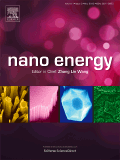
Nano Energy
Innovating Tomorrow's Energy SolutionsNano Energy is a premier journal published by Elsevier, focused on the dynamic intersection of nano-technology and energy solutions. Since its inception in 2012, this high-impact journal has made significant strides in advancing research across multiple disciplines, showcasing groundbreaking studies in Electrical and Electronic Engineering, Materials Science, and Renewable Energy. With an impressive Impact Factor that places it in the Q1 category of these fields—including a distinguished rank of #6 in Electrical Engineering and #9 in Renewable Energy on Scopus—the journal serves as a vital resource for academics and practitioners alike. Nano Energy aims to disseminate innovative research and developments that contribute to the sustainable energy landscape, thereby addressing pressing global energy challenges. Researchers and professionals seeking to stay at the forefront of nanotechnology applications in energy generation and efficiency will find this journal an indispensable platform for sharing knowledge and driving impact.
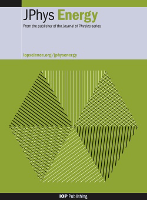
Journal of Physics-Energy
Pioneering Discoveries at the Intersection of Energy and MaterialsJournal of Physics-Energy, published by IOP Publishing Ltd, is a leading Open Access journal that serves as a dynamic platform for the dissemination of high-quality research within the interdisciplinary realms of energy, materials science, and materials chemistry. Since its inception in 2019, the journal has gained remarkable recognition, achieving a prestigious Q1 ranking in multiple categories in 2023, highlighting its impact within these rapidly evolving fields. With its Scopus Ranks, placing it in the top 10% of journals for General Energy and within the top 20% for Materials Science disciplines, it reflects the commitment to excellence in research and innovation. Conveniently based in the United Kingdom, the journal is designed to facilitate collaboration and knowledge exchange among researchers, professionals, and students dedicated to advancing the understanding of energy technologies and materials science. The open access model ensures that cutting-edge research is freely available, promoting global accessibility and engagement with the latest scientific advancements.